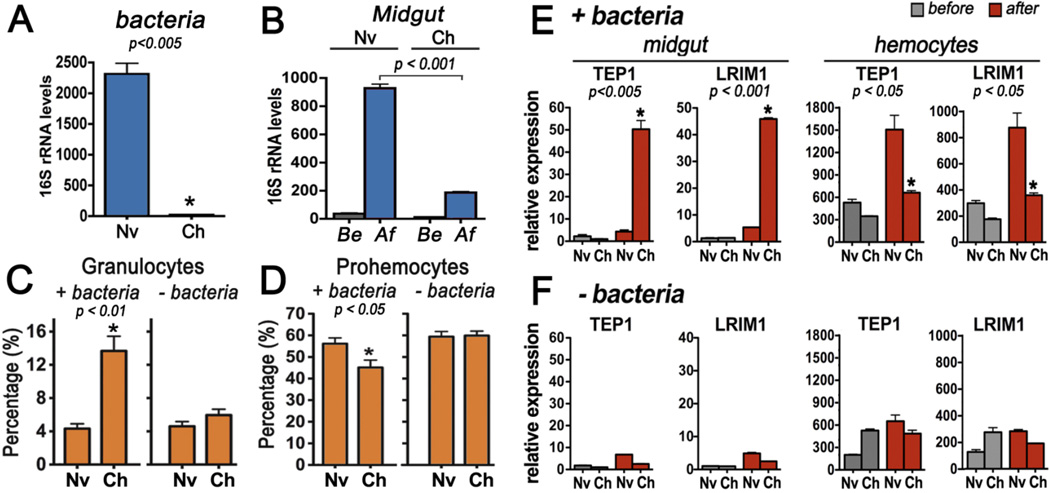Fig. 2.
Effect of immune priming with Plasmodium/bacteria on commensal bacteria, hemocyte populations, and gut-associated hemocyte-specific antiplasmodial mRNAs. (A) Effect of priming on whole-body bacterial levels in naïve (Nv) and challenged (Ch) mosquitoes 7 days post priming (dpp). (B) Total midgut bacteria before (Be) or 24 hours after (Af) a second infectious meal was given 7 dpp. Bacterial 16S rRNA levels were determined using real-time PCR. Effect of immune priming on the relative abundance of (C) granulocytes and (D) prohemocytes 7dpp in the presence or absence of gut microbiota. Effect of immune priming on the relative abundance of TEP1 and LRIM1 mRNAs associated with the midgut or circulating hemocytes in (E) the presence or (F) the absence of gut microbiota determined before (grey bars) or 24 hours after (red bars) a second infectious meal was given 7 dpp. Bars represent the Mean ± SEM.

